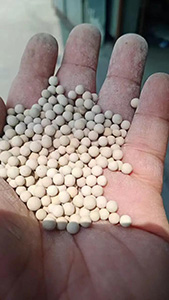3A molecular sieve activation requires precise temperature control to balance efficiency and structural integrity. The standard range is 200–300°C, with 250–280°C considered optimal for most industrial applications. This range ensures thorough desorption of adsorbed water while preserving the sieve’s 3-angstrom pore structure, critical for its selective adsorption properties.

Activation at temperatures below 200°C may leave residual moisture, reducing the molecular sieve’s subsequent adsorption capacity. Conversely, exceeding 300°C risks thermal degradation, causing pore collapse and permanent loss of performance. The process often involves heating the sieve gradually—typically at a rate of 50–100°C per hour—to minimize thermal stress, especially when the sieve is packed in dense industrial columns.
Dry, inert gases like nitrogen are used during activation to carry away desorbed moisture, preventing re-adsorption. The duration varies with temperature: at 250°C, 2–3 hours suffice, while lower temperatures may require longer exposure. Post-activation, cooling the molecular sieve under dry conditions maintains its activity, ensuring it is ready for immediate reuse in drying applications such as gas purification or solvent dehydration.
Adhering to these temperature parameters ensures the 3A molecular sieve retains 80–90% of its initial capacity over hundreds of cycles, making it a cost-effective choice for continuous industrial processes.

